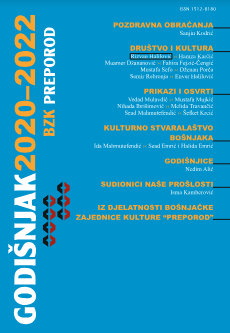
Izvještaji podružnica BZK “Preporod” u Bosni i Hercegovini
Reports of BZK "Preporod" branches in Bosnia and Herzegovina
More...We kindly inform you that, as long as the subject affiliation of our 300.000+ articles is in progress, you might get unsufficient or no results on your third level or second level search. In this case, please broaden your search criteria.

Reports of BZK "Preporod" branches in Bosnia and Herzegovina
More...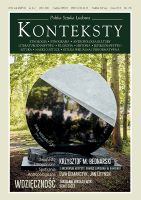
The author chose as the point of departure for his reflections on the meaning of the sacrifice of thanksgiving in the Old Testament ritual thanksgiving psalms, recognised usually by the presence of words originating from the Hebrew jada – give thanks. Such phrases as hodu – give thanks or toda can be also found in the Psalms. In addition, the word hoda’ah means, first of all, to recognise. Gratitude thus will assume the character of thanksgiving only when it contains the activity of recognition and appreciation. Thanksgiving psalms are also built on a death-life thematic contraposition resulting in a diametrical turn in existence. The expression of such a state involves sacrifices which, according to the Rabbi Kahane Midrash, affect the cosmic sphere. Offering them is then identical with the creation of Heaven and Earth. What, therefore, consists the foundation of the sacrificial in the Tanach? What steered it and endowed it with significance? What is the role of thanksgiving in this process, and to whom is it addressed today?
More...
The refuse heap in the ghetto landscape is truly incredible. Its horror probably originates from overstepping its, seemingly, natural territory. The ghetto dump appears to break free from the frames, ruptures the form, passes from lifelessness to a sui generis life, ceases to be a motionless pile of refuse and assumes inner power. Ghetto rubbish dumps, i.e. junk, wretched remnants of people’s lives cast into the street, empty shells of existence – such is the landscape of the Holocaust. And yet in these piles of “dead” refuse there pulsates some sort of dark energy, while processes of biological transformation: rot, decay, and mould – symptoms of that life, last endlessly. People who left behind this rubbish had been changed into ashes cast into rivers and scattered on fields. They enter the great cycle of the transformations of Nature. Holocaust is annihilation. It consumes people, whilst each person has his own face, history, and place on Earth. He leaves behind a void. Nothing will fill it. And yet I find it difficult to cease thinking that some sort of a form of life goes on uninterruptedly in an extraordinary manner, perceivable only from a global, planetary perspective. I cannot grasp this aporia of annihilation and duration.
More...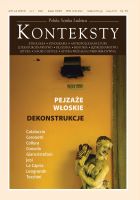
“I was conceived in the mid-1950s in a humble Venetian hotel at the back of a train station, during a love escapade of my mother and her professor”. The presented text, written at the time of a suspension of the pandemic, is the author’s subjective perception of Venice (Cataluccio was Venetian by birth and a resident of Milan). This unique image, lined with personal emotions, is distant from Baedekerian obviousness. From time to time the vivid personal perspective contained in it is counterpointed by poetry (Josif Brodski, Tomas Venclowa) and drama (Simone Weil).
More...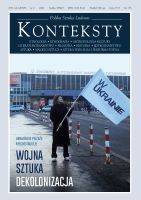
Using only a notebook and pencil, the author describes a living space shrinking day by day, the first days of the war in a basement, the sudden evacuation from Kharkiv, and the experience of being a war refugee. At the same time, this illustrated war diary is an affective record of family history.
More...
The Case of Les and the Berezil Theatre at a Session of the Soviet Commissariat for Education. Transcript from a Meeting Held on 5 October 1933.
More...
The concept of a “Skovorodian” or “follower of Skovoroda” (after M. Shlemkevych, Y. Lypa, V. Janiv, and others) is usually understood to be a Ukrainian from the second half of the eighteenth century, for whom the greatest authority was the itinerant Ukrainian philosopher Hrihorii Skovoroda and the latter’s supposed quietism – an escape to one’s inner self, Nature, and moral self-improvement, together with indifference towards all that is external, paltry, and social. The silent consent of such a follower supposedly accompanied the fall of the Hetmanate, while processes at the turn of the eighteenth century, with far-reaching consequences (the onset of modern Ukrainian literature and identity), took place already without his participation. The author of the article disputes with similar opinions by arguing that I. Kotliarevsky, founder of modern Ukrainian literature, viewed the world “through the eyes of a Skovorodian” (after M. Hrushevsky, O. Rusov, S. Yefremov, and L. Ushkalov), and situating the initial impulse for the works of T. Shevchenko within the domain of influence exerted by Skovoroda. Moreover, Rostislav Chopyk launches a thesis about the “crisis of Gogol’s prose” (after E. Bojanowska) and the existential decline of M. Gogol, whose last years were maintained in an anti-Skovoroda spirit. Skovoroda’s philosophy proves to be a criterion of the Ukrainian spirit upon the threshold of the self-formation of modern identity. A “Skovorodian” was compelled to choose “between Gogol and Shevchenko” (af ter J. Łucki), i.e. between a follower of Gogol, who accepted the empire, and that of Shevchenko, who challenged it.
More...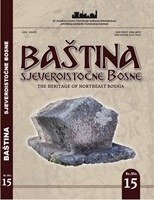
In the period between the two world wars, there were no musical groups in northeastern Bosnia schools. In Bosnia and Herzegovina, since 1920, the only regional music group has been active in Sarajevo school. The most significant activity in musical life in this period was performed by performers ensembles. Mostly, these were choirs that worked for singing societies and others instrumental orchestras and ensembles. For the reasons mentioned, there was a need for research, by collecting, revealing and analyzing data, with the basic goal of seeing the facts about activities of singing societies in this period and their contribution to the development of musical culture.
More...
The pandemic crisis, as a turning point in recent history, has caused existing resources to be mobilized in a short time and triggered the emergence of unique approaches to spatial reorganization. With their formal freedom, unlimited adaptability and short production cycle times, lightweight inflatable or pneumatic structures, which are still in the midst of a technological boom, are an undeniable source of inspiration for today's crisis adaptation. Beyond pragmatic features such as ergonomics, protection and cleanliness, a variety of stylistic approaches can be identified, ranging from small-scale, minimal interventions in interior architecture, to large-scale, urban interventions. The article reviews the sources of inspiration that cross time and space, moving from the utopias of the 1960s to the emergency projects of the 21st century, with the aim of highlighting, through the broad spectrum of solutions, a direction to follow in architecture adapted to crisis solutions. Inflatable structures still fascinate, having the potential to be symbolic in any context.
More...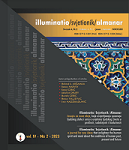
The paper analyzes the relationship between Occidental-Westernized understanding of art and a possible status of art within an integrated discourse – al-thawābit al-islāmiyyah, as well as the aesthetic-metaphysical experience of the traditional Islamic systematization of knowledge – ṣināʿat al-kitābah, and the action of making a visual form beautiful – ṣināʿat al-taṣwīr. Particular attention attention is attached to the concept of qadar/ṣināʿat, where it is possible to distinguish between homo islamicus’s ornamental activity of recognitive type and the cognitive productive-reflective representation of collaborative disposition. Due to the simultaneous existence of unity and difference within the aestheticized activity/ṣināʿat of recognitive type (ornamental form) – al-ṣināʿat al-zukhrufiyyah, the paper strives to show that the traditional systematization of knowledge provides the most complete expression to the aesthetic meaning of the unity-difference dialectic, which is in turn manifested in the qadar/ṣināʿat discourse under the umbrella of ṣināʿat al-taḥsīn – the issue of the modalities of discourse in the context of pictorial activity/ṣināʿat rather than fann al-taḥsīn. Still, a particular emphasis is placed on the parallel existence of a kind of informative initiation of applied form – al-ṣināʿat al-taṭbīqiyah aimed at achieving a distinctive content-related goal of aestheticized activity/ṣināʿat of homo islamicus, where he is not involved in imitation or figural representation with a special importance of the pure figural phantasm (miniature visual representation/books of Arabic and Persian manuscript). The paper also analyzes and substantiates meanings of the Arabic word al-fann, and raises the question as to why the word al-fann has been selected to refer to the phenomenon of art in modern Arabic, rather than the word al-ṣināʿah (skill, practical knowledge). To articulate the answer, the paper studies the words in Arabic lexicographic, non-lexical, i.e. semantic tradition, and substantiates and defines the reason for the established use of the word al-ṣināʿah within qadar/ṣināʿat, i.e. the science of the pictorial – ʿilm al-taṣāwīr.
More...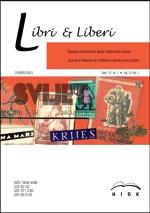
Review of: Sara Pankenier Weld. 2018. An Ecology of the Russian Avant-Garde Picturebook. Amsterdam and Philadelphia: John Benjamins Publishing Company. 236 pp. ISBN 978-90-272-0018-1.
More...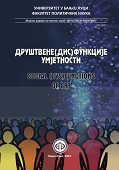
This paper will examine the functions and dysfunctions of art in ancient times and modern societies from an artistic perspective. It will focus on the New Kingdom of Ancient Egypt as well as on contemporary Egypt (post revolution). It will give historical context to specific examples of identity expression in art and use modern language to explore both ancient and modern artistic expressions in Egypt. The paper will make correlations between narratives in the ancient and modern worlds through specific examples of visual art and how it was used as a channel for both mourning and liberation. Using Ancient and modern Egyptian mortuary artwork, this paper explores these correlations in the ancient and contemporary societies based on the examination of visual and textual contexts from both periods. This examination of mortuary art analyzes the purposes of these different types of mortuary works to determine their functionality or dysfunctionality, demonstrating the vulnerabilities of self-expression through art as a result of religion and politics. These findings show the effects of religion and politics on identity in Egypt and how it has been used beneficially to society and individuals as well as detrimentally throughout Egypt’s history.
More...
The study aims to employ visual semiotics to analyse the ritual graphic signs – both sacred and secular – present in the Rēzekne Jewish cemetery, treating it as an integral part of the city and examining its “signifier” and “signified”. The Star of David, serving as the primary symbol within the ritual graphics, is observed to gradually lose its status as a purely sacred symbol and, on certain tombstones, confirms the structure of a symptom, conveying a reminiscence or simple message. The paper seeks to elucidate not only the cultural and social factors contributing to these changes but also to the mechanisms underlying the mutual transitions between symbols and symptoms, along with the differences in the coding of these types of signs. Ritual graphics is an important indicator of the regularity of cultural processes within ethnically diverse environments. A survey of Jewish cemeteries in the Latgale region highlights clear distinctions in the choice of visual graphics between urban and rural settings. Furthermore, alongside verbal accounts of the deceased, ritual graphics, on the one hand, complement these narratives as integral components, while, on the other hand, maintain an independent existence. This is because, for observers, the primary and sometimes sole point of contact (particularly for those unfamiliar with Hebrew and Yiddish) is the visual or non-verbal sign. The study emphasises the divergence between the sacred symbolism of the hexagram and the secular interpretation of the yellow star or “badge”, exploring the causal relationships underlying their usage and perception from the point of view of visual semiotics and cultural philosophy, specifically examining phenomena of symbolization and desymbolization.
More...
The period of the so-called Stagnation (1970s–1980s) in the history of the USSR was a productive time for art in some ways: the momentum of the Khrushchev’s Thaw continued, resulting in a shaky ideological framework containing artists that had learned to either violate, ignore, or only verbally support the canons of socialist realism. In the socialist areas of Eastern and Central Europe, art had become a kind of “resistance movement”, with subtle subtext used to express rebellion against the political and social setting. One of the key fields of this “resistance” was theater, where visual metaphors became an especially important means of expression. In many cases, the audience was able to perceive a narrative containing a vastly different message than the one in the literary text of the production. Scenography gained a special significance as the main provider of such visual metaphors. Looking back, certain parallels can be drawn between theater phenomena of that era in Soviet states and in the West. These parallels are further drawn by comparing Soviet era research concepts with Western theories in theater.
More...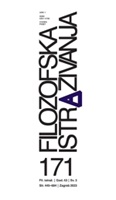
The paper aims to present the philosophical background and justification of the theory of social realism. Social realism is a representative example of a literary period in which the autonomy of literature in terms of, for example, the aesthetic value of a literary work, was brought to a negligible level given the radical demands of regime poetics of writing in accordance with politics and ideology. Socialist-realism, poetics in which party writing and educating people in the form of socialist progress and without any concern about literary creation are paramount, finds its postulates in theories of the Union of Russian Proletarian Writers (RAPP) and proletarian cultural and educational organization (Proletkult). Theorists of socialist realism poetics claim that their postulates find philosophical justification in Marx’s and Engels’ texts about art. The primary subject of analysis in the article will, therefore, be the connection between the theory of social realism and the classical Marxist conception of art. Based on the analysis, it can be concluded that the theory of social realism is justified by classical Marxist aesthetics regarding historical materialism which determines art, but not in the sense of denying the autonomy of the art.
More...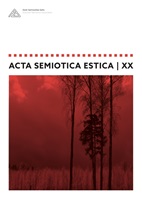
The article examines the xenophobic attitudes voiced in one of Euripides' most famous tragedies “Medea”, revealing mainly through lexical analysis how fear or anger towards the “other” perceived as foreign, unknown or even dangerous is expressed both in Euripides's original play and its translations and interpretations. In order to study the mediation of xenophobic ideas in the Baltic reception of Euripides' “Medea”, we selected those Medea-themed plays conveyed into the Baltic national languages in the genre of tragedy, and which have either already been staged or are suitable for the stage in their form. The analyzed material includes the tragedies of Euripides, Seneca, Franz Grillparzer, Jean Anouilh, Christa Wolf and Lyudmila Razumovskaya. The research part of the article is divided into three chapters devoted to different versions of “Medea” in Lithuanian, Latvian and Estonian. Research results show that in Medea tragedies in the Baltic cultural space, Euripides' ideological construction is almost never fully recreated: shifts in meaning occur both through lexical substitutions and as a result of omissions. However, the reasons for the changes are very different: behind them may be the need to make the piece more audience-friendly, to adapt the content to quantitative versification, and to fit the original theme into a modern context. The agency of these changes is different as well: transformations are made by interpreters, translators, editors and/or theater-makers.
More...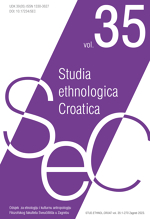
Review of: Tomislav Augustinčić, Goranovo proljeće: mjesto i društveno sjećanje u kontekstu pjesničkog festivala, Zagrebm, Hrvatsko etnološko društvo, 2023., 110 str.
More...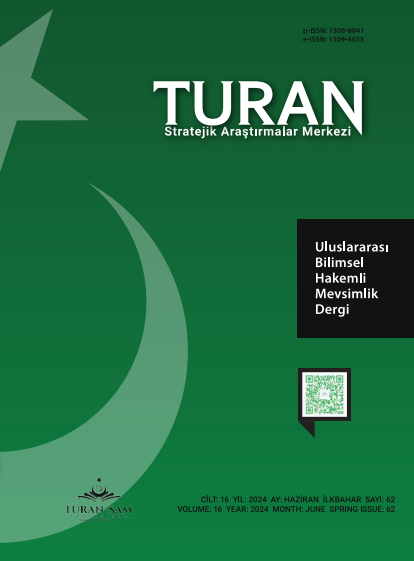
The "Khosrow and Shirin" masnavi is a beloved story found within Nizami Ganjavi's "Khamsa of Nizami" and holds a significant place among love-masnavis. Our study is composed of selected works from the illustrated 15th-century Nizami Khamsas found in the Topkapi Palace Museum Library. These are the Nizami Khamsas numbered B.146, H.759, H.761, H.771, H.774, H.778, H.792, and R.866. The miniatures we selected from these works depict the topic of Shapur's journey to Armenia to ask for Shirin. These miniatures have been meticulously examined, and their compositional structures have been technically analyzed. The article briefly discusses the cultural and artistic environment of the Timurid and Turkoman periods in the 15th century and how it is reflected in miniature art. It provides brief informations about Nizami Ganjavi and his Nizami Khamsa. The "Khosrow and Shirin" masnavi is described, followed by a discussion of the story depicted in the selected miniature. Each miniature portraying the same story in the manuscripts has been examined in detail, and the similarities and differences between these pages have been observed. The miniatures have also been examined in terms of depicting the social and cultural life of the period, technically analyzed, and introduced with detailed descriptions. The story has been provided from the Turkish text of the work, and although not too detailed, references have been mentioned.
More...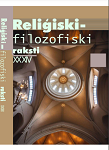
The article looks at graphic design trends on four types of religious websites, starting from the Roman Catholic Church, Jehovah’s Witnesses, to the Hare Krishna, and the World Association of Witches, Wizards, and Neopagans. This study is part of a larger project on the visual world of Latvian religious life, which will gradually analyse the artificial qualities of other websites with religious content. The article is based on the author’s specialisation in the evaluation of interfaces of websites and his knowledge of the rules of graphic design, as well as the requirements of artistic qualities on the web. One of the aims of religious activities is to proclaim one’s faith in the public space and to attract new members. Nowadays, this is done through new methods where virtual reality and the impact of visual representations on the viewer come to the fore. Based on the critical analytical methodology of art science, the article’s introduction describes the general trends of visualisation, choice of colours, images, symbols, and composition on religious websites. The article also deals with ergonomics, visual perception, and marketing issues and analyses the visual impact on users. Studies on the artistry of religious websites are scarce worldwide, so the article is innovative and conceptually creative, useful also for graphic designers and content creators who have yet to receive any evaluation regarding artistic qualities so far. The article concludes that more and less successful artistic solutions exist in the religious world. The Roman Catholic Church websites are analysed as successful, adhering to classical graphic design norms, even though users might want more updates. The Vatican website is successful, with some problems. The Vatican news portal has been particularly modernised. The website of Jehovah’s Witnesses is globally designed but has little local appeal, a stencil artistic approach with photos of individuals, and a confusing choice of black colour. The information is well structured, and navigation is easy to follow. However, as in the case of the Vatican website design, Jehovah’s Witnesses have yet to, over time, attempt to create any significantly different design approaches that would appeal more to the 21st-century user. The design of the website of the International Society for Krishna Consciousness, a religious movement, is in the process of being changed. In 2006, the central website was designed in a style consistent with Western graphic design trends, successfully complemented by symbols from Indian culture and fragments of Hindu artwork. In 2013, its artistry deteriorated, but today it is partially improved again. The site has no appreciable artistic qualities in Latvia. The World Associations of Witches, Witchdoctors, and Neopagans have generally created a very varied, often poor-quality scene dominated by commerce. The article concludes that in the early 2000s, website design underwent a renaissance and new technological possibilities provided a wide range of artistic expressions on the Internet. Today, however, the design functionalists are celebrating their victory, which has led to a fallback in web design and the visual uniformity of a large part of the web. The author of this article calls the phenomenon of the unification of graphic design on websites the “McDonaldisation of interfaces.” The creators of religious content websites should give the artistic possibilities offered by the new technologies of the 21st century more attention.
More...![Passe douloureux et présent apaisé ? Des récits de vie de femmes allemandes et polonaises en Silésie dans le documentaire Aber das Leben geht weiter [Mais la vie continue]](/api/image/getissuecoverimage?id=picture_2023_82626.png)
Two elderly German women return with their daughter and niece to their former family home in Silesia (Poland), only to find the current Polish home owner along with her descendants. This is how the German film director Karin Kasper documents her own family history together with that of the Polish family installed in their farmhouse after the Second World War, in her movie Aber das Leben geht weiter [But Life Goes On], produced in 2010. I aim to analyze the representation of this exclusively feminine intergenerational and international encounter. Fueled mainly by the narratives of elderly people, but also by photographs and videos taken from the respective family archives, and, of course, by several recordings of the participants themselves as well as the house and the village where these reunions take place, this documentary’s objective is to preserve and share the memories of the older generation. Such memories stir up very painful facets of the history of the 20th century in Eastern Europe: Second World War, persecutions and forced displacements of Polish ethnics by Germans and Soviets, flight and expulsion of the Germans, etc. Which light do these exclusively feminine micro-histories shed on the historical facts? How are the traumatic experiences expressed even decades afterwards? Could it really be a question of resilience? What emotions arise from what is said, but also from silences and postures? What heritage of memory and post-memory has been transmitted to the next generations? More broadly, can this “film testimony” contribute to the German-Polish reconciliation? Such are the main questions to which I wish to respond.
More...